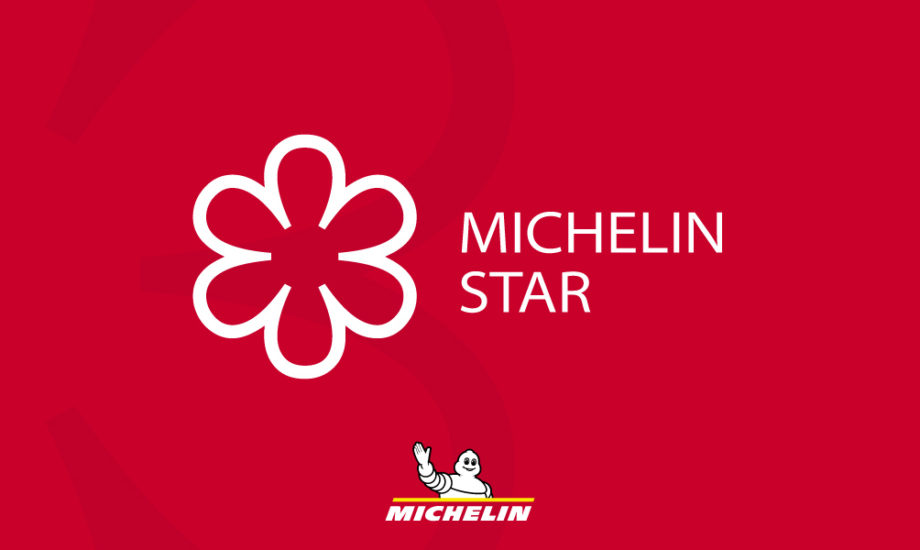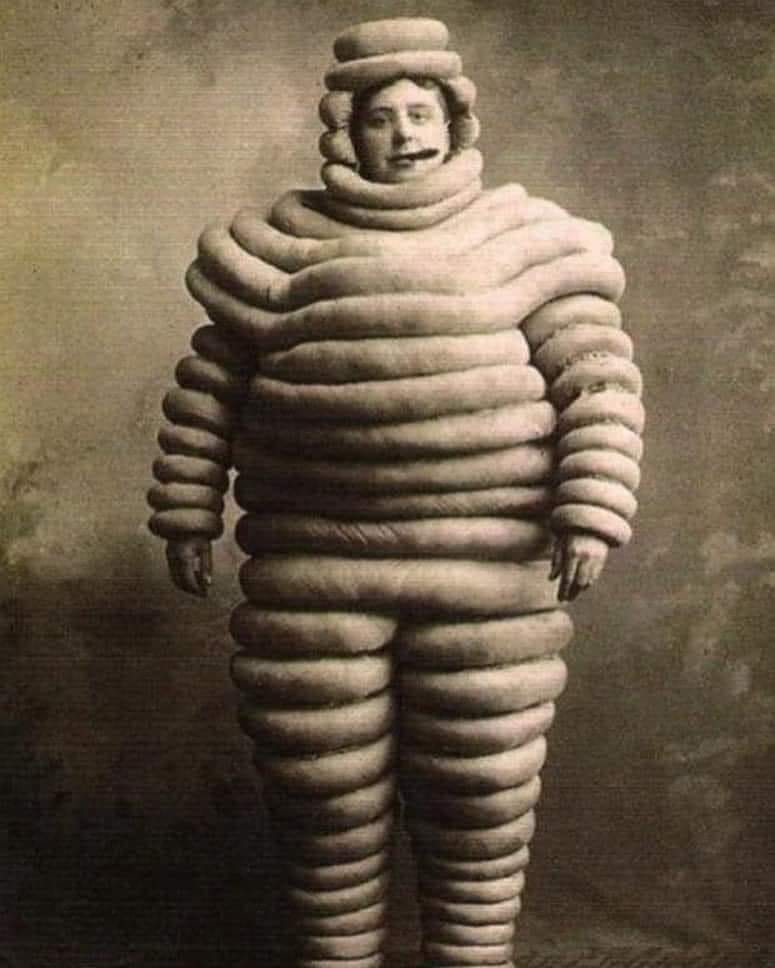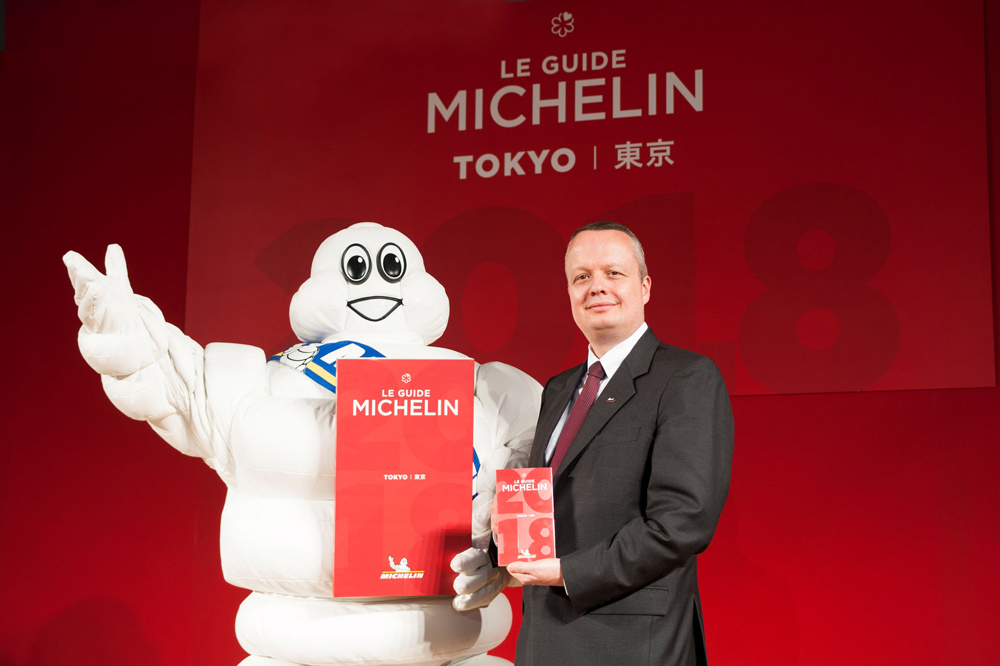Savoring Perfection - Demystifying Michelin Stars And Exploring The World Of Acclaimed Culinary Brilliance
When it comes to recognizing the pinnacle of culinary expertise and restaurant quality, few accolades carry as much weight and prestige as the Michelin stars. Originating from a tire company's guidebook, the Michelin star rating has evolved into a global benchmark for fine dining, with chefs and restaurateurs around the world aspiring to earn this coveted distinction.
Author:James PierceReviewer:Paolo ReynaJan 19, 2024574 Shares22K Views

When it comes to recognizing the pinnacle of culinary expertise and restaurant quality, few accolades carry as much weight and prestige as the Michelin stars.Originating from a tire company's guidebook, the Michelin star rating has evolved into a global benchmark for fine dining, with chefs and restaurateurs around the world aspiring to earn this coveted distinction.
History Of Michelin Stars
The history of Michelin stars dates back to the early 20th century. In 1900, the French tire company Michelin published its first guidebook, "The Michelin Guide," with the primary aim of promoting tourism and, consequently, the use of automobiles and, by extension, Michelin tires. The guide initially included practical information for motorists, such as maps, tire repair tips, and lists of hotels and restaurants.
The Michelin Guide began awarding stars to restaurants in 1926. The stars were initially intended to denote the quality of the food, with a single star signifying a "very good" restaurant. Over the years, the criteria evolved to include factors like the chef's skill, creativity, use of quality ingredients, and consistency.
By 1931, the Michelin Guide introduced the three-star system we recognize today, with three stars denoting "exceptional cuisine that is worth a special journey." The guide's anonymous inspectors visit restaurants worldwide, and the awarding of stars is considered one of the most prestigious recognitions in the culinary world. The Michelin Guide has since become a global authority, covering major cities and regions, influencing culinary trends, and shaping the reputation of restaurants and chefs worldwide.
What Michelin Stars Represent
A Michelin star is an indicator of exceptional cuisine that is worth a detour or a special journey. Restaurants can be awarded up to three stars, with each level signifying a different degree of culinary excellence.
- One star: "A very good restaurant in its category," offering cuisine prepared to a consistently high standard.
- Two stars: "Excellent cooking, worth a detour," where dishes are skillfully and carefully crafted.
- Three stars:"Exceptional cuisine, worth a special journey," indicating a restaurant delivers a top dining experience with outstanding dishes of the finest quality.
One Star
The latest Michelin Guide says, "High-quality cooking, worth a stop!" One Michelin star is the lowest award, but it is still a significant honor and may indicate a fresh culinary talent to watch in the future. Only a small percentage of restaurants around the world have even one Michelin star; Tokyo now has the most, with 161 restaurants out of tens of thousands in the city.
Hawker Chan, a Singaporean hawker stall recognized for its superb street cuisine in 2016, is one of the notable restaurants with one Michelin star. Hawker Chan's award-winning soy chicken and noodles are available for roughly two US dollars.
Two Stars
"Incredible cuisine, definitely worth the detour!" says the Michelin Guide. At the start of 2020, there were only 414 restaurants in the world that had two Michelin stars, making them even more rare.
Some of the industry's most renowned chefs own two-star restaurants, which are known for their reliably excellent cuisine. There will probably be a huge line to get a reservation at several of these restaurants because of their stellar reputations in the world of fine dining.
La Gavroche, a two-Michelin-starred establishment in London owned by chef patron Michel Roux Jnr., is known for its classical French cuisine. Marco Pierre White and Gordon Ramsay are among the chefs who have worked at La Gavroche, the first restaurant in the United Kingdom to receive a Michelin star in 1974. The menu includes meals such as Omelette Rothschild, Soufflé Suissesse, and Le Caneton Gavroche.
Despite not having a third star, the wildly acclaimed Copenhagen bistro Noma is often named among the world's top restaurants. It is another two-star establishment. Famous dishes at Noma include "The Hen and The Egg," which guests prepare themselves. It was founded by chef René Redzepi and culinary entrepreneur Claus Meyer. The restaurant is renowned for its reinvention of Nordic cuisine.
Three Stars
This restaurant has "exceptional cuisine, worth a special journey!" according to the Michelin Guide. Just 137 restaurants worldwide have achieved the greatest mark of success, three stars, which is reserved for the very best eateries.
Run by chefs internationally acclaimed for their contributions to the culinary arts, three-star establishments are the pinnacle of fine dining. These eateries are the best there is, providing a once-in-a-lifetime dining experience that is constantly in demand.
Though each three-star restaurant is noteworthy in its own right, Les Prés d'Eugénie has been the recipient of the distinction for the longest. Founded in 1977 and producing cuisine that is considered to be among the best in the world, the restaurant has held the title for the longest.
A spa complex in the small French town of Eugénie-les-Bains houses Les Prés d'Eugénie, which is owned by chef patron Michel Guérard, one of the pioneers of nouvelle cuisine, and his wife Christine. Among the most well-known chefs in France is Guérard, whose specialties include soft pillows of morels and wild mushrooms, lobster that has been lightly smoked in the hearth, and tsarina eggs with caviar. Discover the locations of every three-star Michelin-starred restaurant worldwide.
This article in the 2020 guide has all the information you need to know about the locations with the highest concentration of Michelin-starred restaurants. France, the country that gave rise to the Michelin guide, is hardly surprising as it has the most stars, but Japan is not far behind, with 226-starred restaurants in Tokyo alone.
The Evaluation Process
The exact process of how Michelin reviews restaurants is shrouded in mystery, adding to the allure of the stars. Michelin employs full-time inspectors, who are anonymous and experienced in the hospitality industry. These inspectors visit restaurants incognito, paying for their meals, to ensure their reviews are unbiased and based solely on the dining experience.
Inspectors receive official Michelin Guide training in France and maintain their anonymity to prevent receiving special treatment. Although they are not permitted to speak with the media, it is usually assumed that the majority will have some prior experience running restaurants. It's even advised that they keep what they do from their friends and family! A person who wants to work as a Michelin inspector needs to have a strong sense of taste, be detail-oriented, and be able to interact with regular diners. The majority are seasoned professionals in the hotel sector, and after their tour, they must complete an extensive report.
Inspectors evaluate restaurants based on five criteria:
- The quality of the ingredients used
- The skill in preparing them and combining flavors
- The chef's personality as expressed through the cuisine
- Value for money
- Consistency over time and across the entire menu
These criteria are focused purely on the food. Decor, service, and other amenities are covered in separate ratings within the guide, such as forks and spoons for restaurant comfort and ambiance.
Inspectors return to restaurants anywhere from three to six times before reporting back to their colleagues, who then decide collectively whether to provide stars. The proprietors of these establishments are never informed of the exact time of the inspection. You can give a restaurant a star rating from zero to three, and if they serve good meals at a fair price, they can win the Bib Gourmand award.
Since restaurants, not chefs, are given Michelin stars, cooks can get more than three stars if they are in charge of multiple restaurants. The former owner of an astounding 32 Michelin stars, the late Joël Robuchon, held the record for the most stars ever. The majority of restaurants that are examined end up with zero stars since they do not fulfill Michelin standards.
Those that are considered can have their stars taken away if inspectors detect a decline in quality during repeated inspections. Michelin inspectors are notoriously picky, and even famous chefs can't escape their scrutiny. Reportedly distraught, Gordon Ramsay compared the demotion of his New York City restaurant to "losing a girlfriend" when asked about his emotional response. Restaurants have the opportunity to regain lost stars in the following year's Guide, although it might be challenging to do so when the exact evaluation standards are unknown.
The Impact Of Michelin Stars
For chefs and restaurant owners, earning a Michelin star can have a profound impact. A star can propel a chef to celebrity status and bring significant financial success due to increased demand and prestige. Conversely, losing a star can have the opposite effect, sometimes resulting in decreased clientele and revenue.
Moreover, the stars have a cultural and economic impact on the cities and countries where they are awarded. They can help boost tourism as food enthusiasts travel seeking the finest dining experiences. Some destinations have become gastronomic hotspots, in part due to their concentration of Michelin-starred restaurants.
Controversies And Criticism
Despite its esteem, the Michelin Guide has faced criticism over the years. Some argue that the guide is Eurocentric and biased towards French cuisine and dining standards. Others claim it is outdated, failing to adequately represent contemporary dining trends or the diversity of global cuisines.
There have also been debates about the pressure and stress the star system places on chefs and restaurant teams, with some chefs publicly renouncing their stars due to the intense demands they impose. Moreover, the secretive nature of the evaluation process has led to skepticism about its objectivity and fairness.
The Future Of Michelin Stars
The Michelin Guide has been expanding globally, adding new cities and countries to its repertoire and adapting to include a broader range of dining experiences, such as street food vendors and more casual eateries. This expansion suggests an attempt to stay relevant and cater to evolving tastes and dining habits.
In an era where sustainability and ethical considerations are becoming increasingly important, the Michelin Guide has also started to highlight restaurants that promote sustainable practices, although this is not yet a factor in the awarding of stars.
FAQ's About Michelin Stars
Do They Have A Limit On How Many Stars You Can Award In One Year?
No, there is no limitation. They frequently have many applicants throughout the year, but some drop out because they aren't consistent enough; some have one or two exceptional dishes in their repertoire but serve others that aren't as memorable; and some restaurants take a little longer to grow.
Why Do They Take Stars Away?
Since Michelin creates their Guides with their readers in mind, they would not give a restaurant's cooking another Star the following year if they believe it has declined in quality.
Does A Michelin Star Put Undue Pressure On A Chef?
Apart from continuing to cook to the same caliber that initially earned them the star, chefs at restaurants do not need to alter anything after they receive a Michelin star. Nevertheless, they might discover an increase in demand for them.
Conclusion
Michelin stars remain the most distinguished markers of culinary achievement in the world. The little red symbols in the Michelin Guide are a testament to a chef's dedication, creativity, and commitment to the highest standards of gastronomy. Despite the controversies and the immense pressure they can create, for many in the culinary world, the pursuit of stars is a relentless quest, driving them towards ever greater heights of culinary artistry.

James Pierce
Author

Paolo Reyna
Reviewer
Latest Articles
Popular Articles


